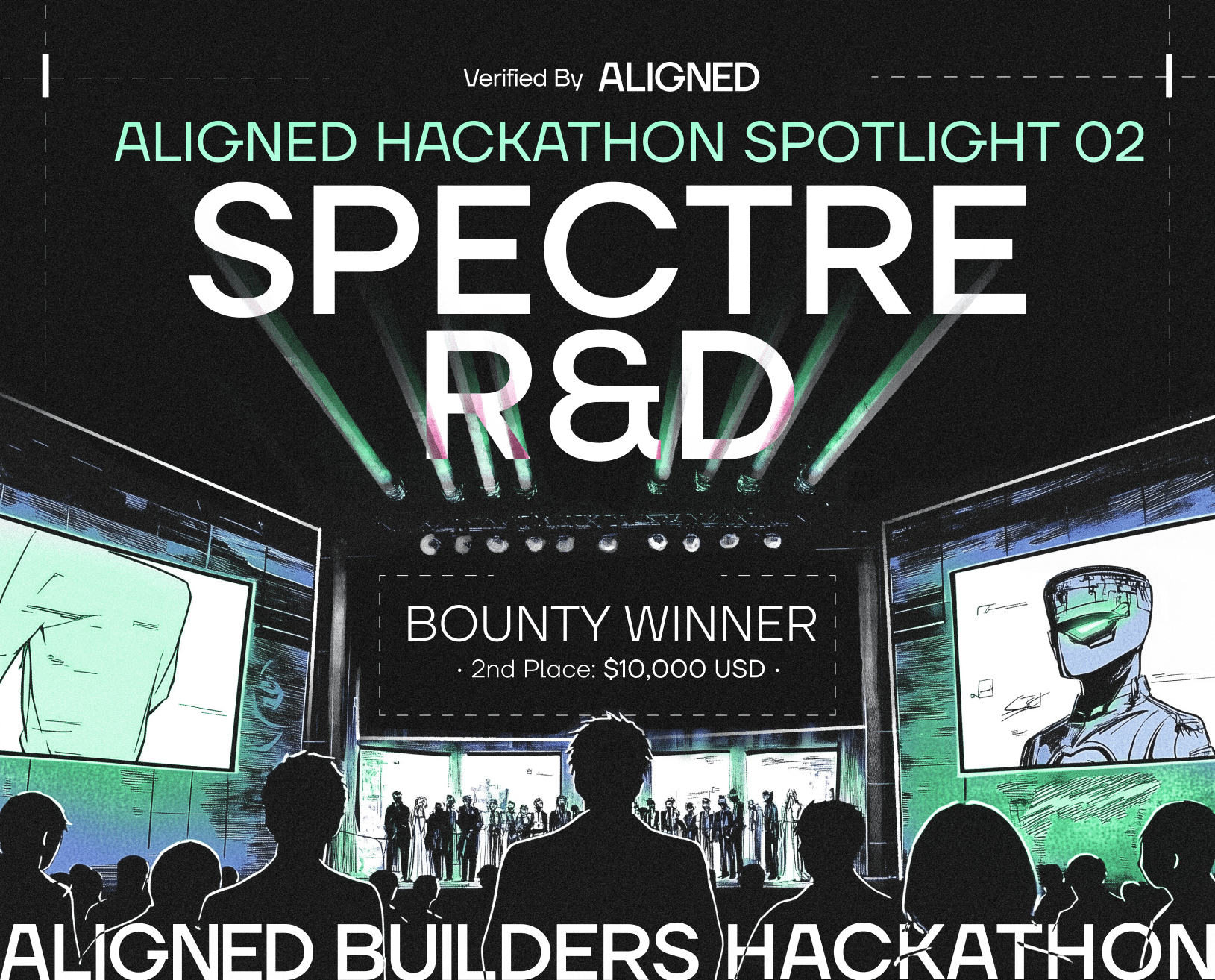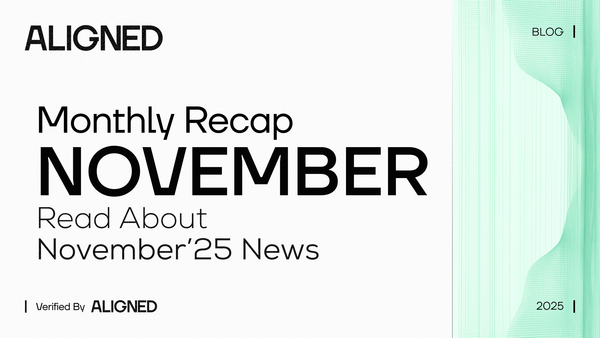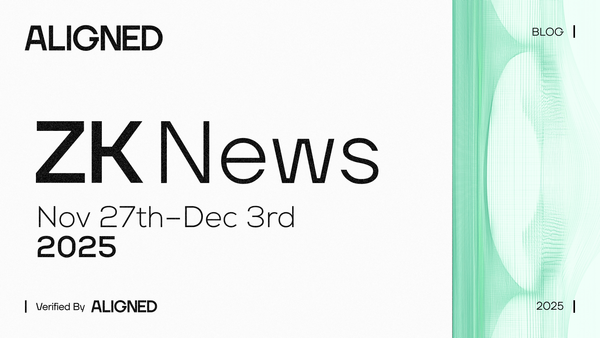Aligned Hackathon Spotlight Vol. 02: Spectre ZK Light Client Re-implementation and Integration with Aligned

Welcome to the second post in our series showcasing the winners of the inaugural Aligned Builders Hackathon. Each article will highlight innovative use cases for ZK technology enabled by Aligned's Proof Verification Layer. You can see the first post, which discusses ZK use cases in gaming, here.
Aligned handles verification in a cost-effective, scalable way—solving the bottleneck of high EVM verification costs. Leveraging Aligned's 90% reduction in verification costs, our hackathon encouraged developers to build new ZK-powered tools and applications.
Today we’re discussing Spectre R&D, the second-place prize winning project by Jonas Pauli. For this hackathon he reimplemented core circuits used in Spectre, ChainSafe's ZK light client for Ethereum, in the Risc0 zkVM to demonstrate how proofs from Spectre could be verified using Aligned.
Spectre is used in Sygma, a cross-consensus interoperability protocol that enables general message passing and asset transfers—in simpler words, a bridge. Sygma is a key piece of Sprinter, a multichain developer toolkit that bundles solutions for bridging, chain abstraction, and liquidity fragmentation.
The need for trust-minimized bridges
Blockchain bridges are essential for transferring assets and data between networks, but they come with significant risks. Nearly 40% of stolen funds in crypto hacks have come from bridge exploits—a reminder that relying on traditional, trust-based relay mechanisms can get users rekt. Typically, bridges require trusted intermediaries or multisig committees to validate cross-chain events, which creates a vulnerable point of failure. By contrast, trust-minimized solutions replace those trust assumptions with cryptographic guarantees.
This is where zero-knowledge proofs (ZKPs) come in. ZKPs let one party prove to another that an event happened (for example, that a block was finalized on Ethereum) without requiring re-execution of that event. When applied to light clients, these proofs can let you verify a blockchain’s state in an efficient way.
A light client is a minimal node that verifies key information (like block headers) instead of storing the entire blockchain state, and a ZK light client takes that a step further by proving state validity with ZK. This ZKP can then be verified on a target chain, eliminating the need for trusted intermediaries or for full re-execution to determine the source chain’s state.
While ZK based light client bridges are more secure than other designs, they are also costlier. At Aligned, we are reducing verification costs to close this gap, so more developers are able to build better and more secure infrastructure using ZK.
This proof of concept excited us because we believe that bridges and interoperability protocols are an area where ZK will have a major impact on improving security and user experience. Indeed, the upcoming Mina to Ethereum state bridge will use Aligned to verify Mina’s Kimchi proofs on Ethereum, allowing the two networks to be connected. Using o1js-blobstream, Geometry Research has brought Groth16 and PLONK verification to Mina, expanding its ability to verify proofs from other systems.
The Ethereum Foundation, as well as Justin Drake, have announced their work on ethproofs. This is a great collaborative project that will build the first steps to prove Ethereum’s state, one of the first things needed to make Ethereum interoperable with other L1s. By enabling proving of the L1 with zkVM light clients, this will unlock more opportunities for ZK bridges to shine.
The future of ZK bridges looks bright as the industry works to enable more advanced cross-chain integrations through the power of ZK and improved bridging solutions.
For a deeper dive into this topic, check out this recent article by LambdaClass and Aligned on a proposed design for a fast, trust-minimized, intent based ZK bridging solution.
Spectre re-implementation in the Risc0 zkVM and verification using Aligned
The Spectre ZK light client directly verifies consensus data from Ethereum, allowing Ethereum’s state to be read on a target chain. Instead of relying on external relayers, Spectre uses ZKPs to attest that a specific Ethereum state is correct.
For our hackathon, Jonas demonstrated how proofs generated by Spectre could be verified using Aligned. This required re-implementation of core Spectre circuits in the Risc0 zkVM—effectively running the light client within Risc0.
Two ZK circuits are needed to run Spectre: CommitteeUpdateCircuit and StepCircuit. In this project, CommitteeUpdateCircuit was re-implemented in Risc0 so its proofs could be verified using Aligned for lower costs and latency.
While this was a proof of concept that did not have the full functionality of Spectre, it successfully integrated with Aligned for verification of the CommitteeUpdateCircuit proofs. The modular design used for this implementation also showed how it could easily be easily extended to StepCircuit, with clear documentation that helped showcase these technical achievements.
See the submission on Devfolio.
Looking ahead
The re-implementation of this ZK light client in Risc0 and integration with Aligned highlights our mission: to reduce the cost of proof verification so that projects can use ZK to build robust solutions that were previously thought to be too resource-intensive, complex, or expensive.
At Aligned, we’re committed to supporting and amplifying these kinds of innovations. We invite developers and enthusiasts alike to check out our documentation, join our community, and follow us on our socials to stay updated on upcoming hackathons and product updates.
Check out our Aligned Builders Hackathon on Devfolio to learn more about the submitted projects, and follow our socials and blog for more articles like this.
Stay tuned: 🐦 Twitter | 🗨️ Telegram | 👾 Discord | 🌐 Website | 📝 Manifesto




